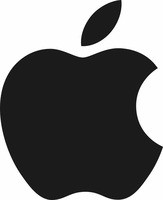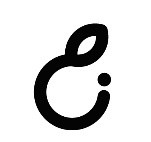With Judgment of 8 March 2023 (B-1974/2022), the Swiss Federal Administrative Court confirmed the rejection of an opposition by Apple against a trademark showing another stylized apple motif.
According to the Swiss Federal Administrative Court, there is no likelihood of confusion between the trademarks shown below, which are claimed for various identical or similar goods and services in classes 9 and 41.


The Court confirms that the Apple logo has a “high reputation” and an “increased awareness” for various goods and services in classes 9 and 41. Accordingly, the scope of protection of the opposing mark must be “considered to be enhanced” with respect to these goods and services. However, the Court sees no substantial similarity in the representation of the marks at issue. Rather, the marks are significantly different in their overall impression. In addition, no direct meaning can be attributed to the contested mark. The opposing mark, on the other hand, conveys the meaning of “a bitten apple.” For this reason, the Court considers that there is no likelihood of confusion between the marks at issue.
The view of the Federal Administrative Court to grant not only wordmarks but also other signs such as figurative marks the status of a well-known trademark with a broad scope of protection is positive and also dogmatically correct. Here, the Gold Bunny ruling of the Federal Supreme Court last year has certainly led to a change in trend, in which even a three-dimensional trademark was qualified as a famous trademark ( https://trademarkblog.kluweriplaw.com/2022/09/30/swiss-federal-supreme-court-confirms-trademark-protection-for-the-lindt-gold-bunny/ ). Consequently, however, the extended scope of protection should actually also be taken into account in the decision on likelihood of confusion, which did not actually happen here. Trademark law is not design law, where the evaluation depends on a synoptic comparison of the opposing designs. What is decisive here is the vague memory impression of the average consumer. And the question is certainly justified whether the average consumer does not make a direct or at least indirect connection with the famous mark APPLE when he sees the shape of a stylized apple – which also shows a leaf pointing towards the right and a gap in the upper right corner – on identical products, such as the electronic goods of cl. 9 or entertainment services of cl. 41 claimed by the opposed mark in this case. It seems that the fear of the myth of a too broad protection of motives (“Motivschutz”) prevails, and thus the protection interests of trademark owners but also of consumers from being misled must take a back seat. And finally, the question arises whether the motif of an apple really has to be kept free for other companies in the electronics and entertainment sector, when it is already used by one of the most famous brand in the world, at least in these product areas.
_____________________________
To make sure you do not miss out on regular updates from the Kluwer Trademark Blog, please subscribe here.
Kluwer IP Law
The 2022 Future Ready Lawyer survey showed that 79% of lawyers think that the importance of legal technology will increase for next year. With Kluwer IP Law you can navigate the increasingly global practice of IP law with specialized, local and cross-border information and tools from every preferred location. Are you, as an IP professional, ready for the future?
Learn how Kluwer IP Law can support you.


